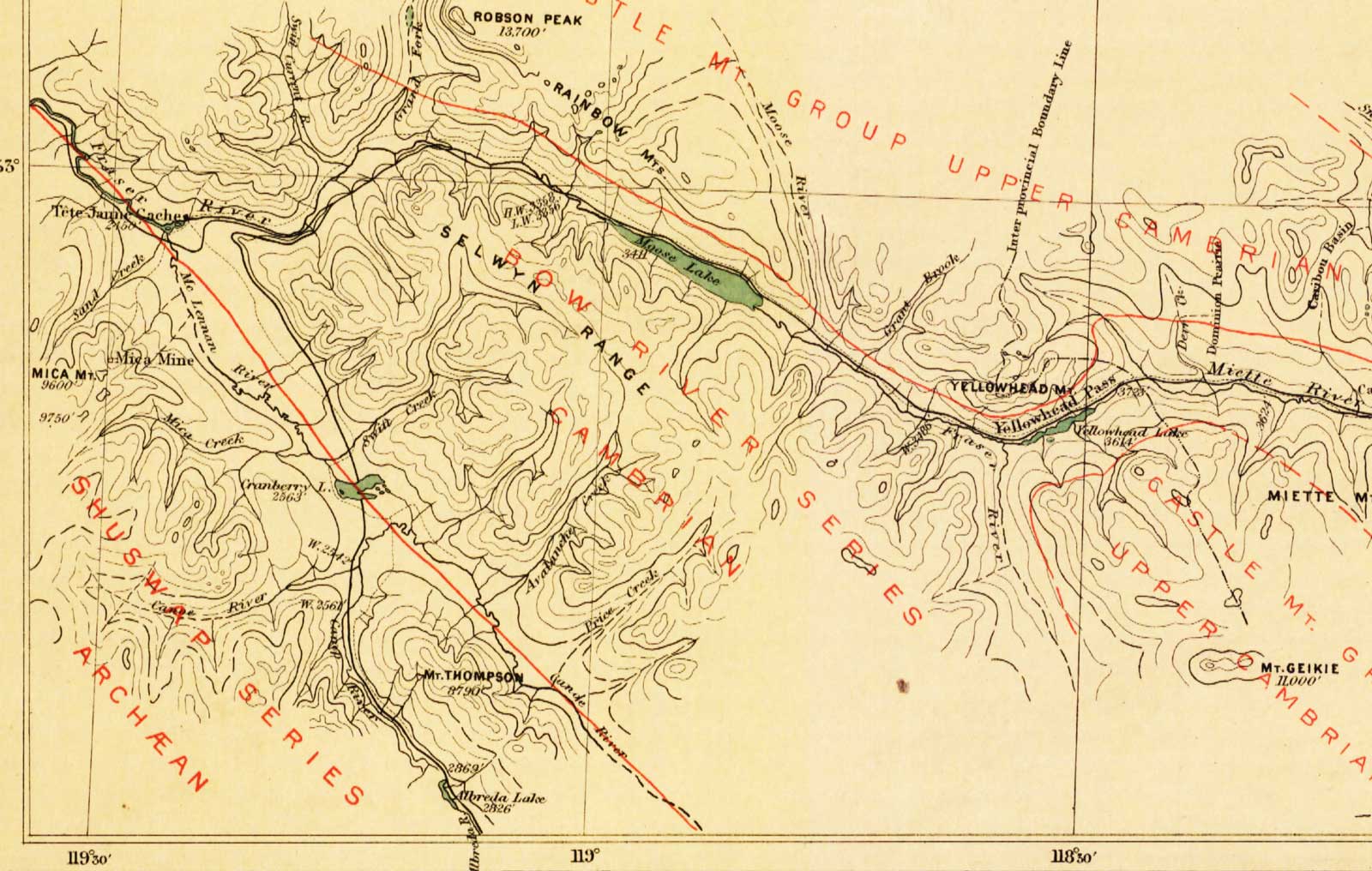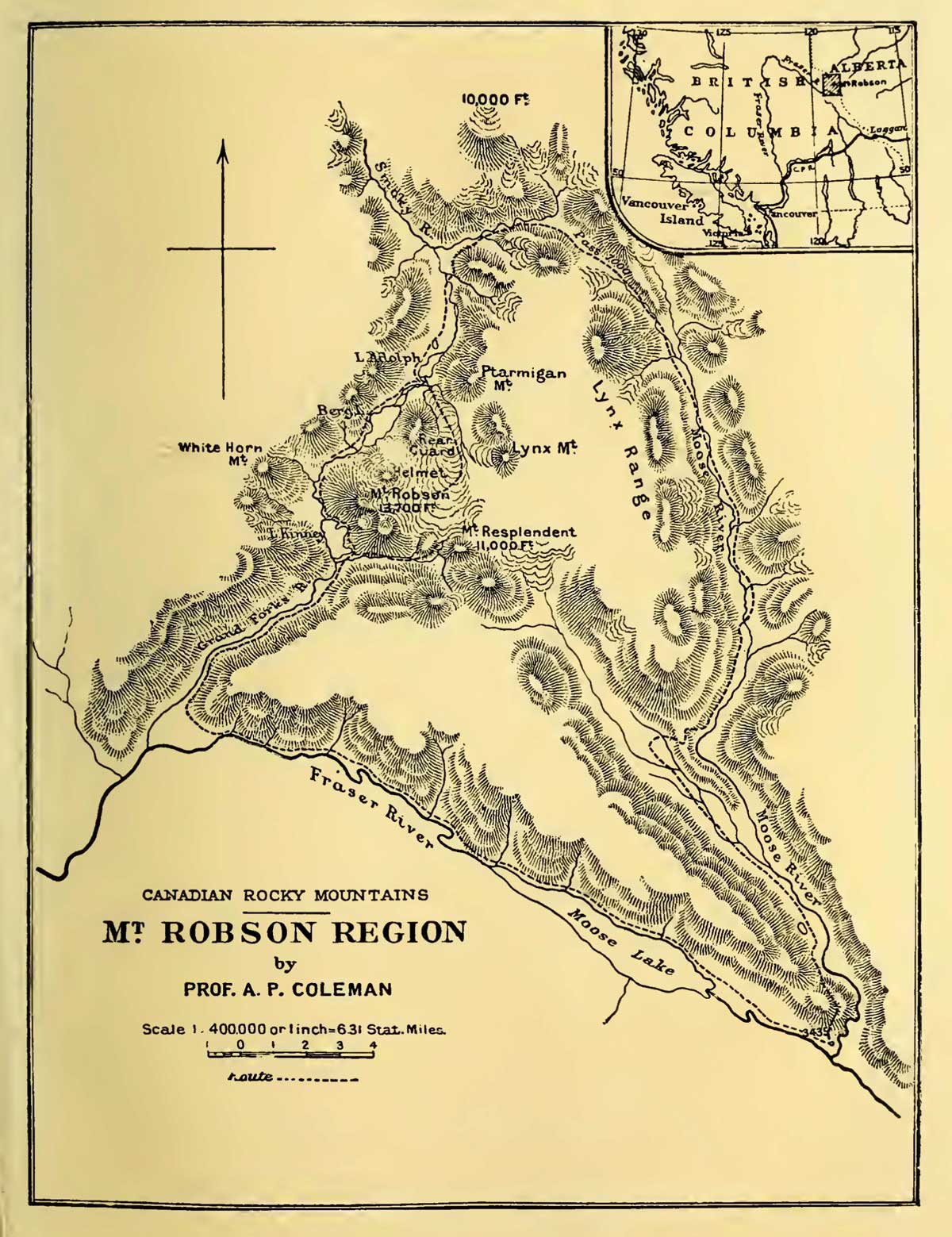
Map of Central Part of Jasper Park, Alberta
Department of the Interior Canada
Based on photographic surveys by M. P. Bridgland, D.L S., in 1915
Whyte Museum
Department of the Interior Canada
From Photographic Surveys by M. P. Bridgland, D.L S. 1915
There is also a set of more detailed maps based on the 1915 survey led by Morrison Parsons Bridgland [1878–1948]:
Maps of Central Part of Jasper Park, Alberta.
Department of the Interior Canada, 1916
Sheet One, Northwest
Sheet Two, Northeast
Sheet Three, West Central
Sheet Four, East Central
Sheet Five, Southwest
Sheet Six, Southeast
- MacLaren, Ian S. Mapper of Mountains. M. P. Bridgland in the Canadian Rockies, 1902-1930. University of Alberta Press, 2005. Google Books













